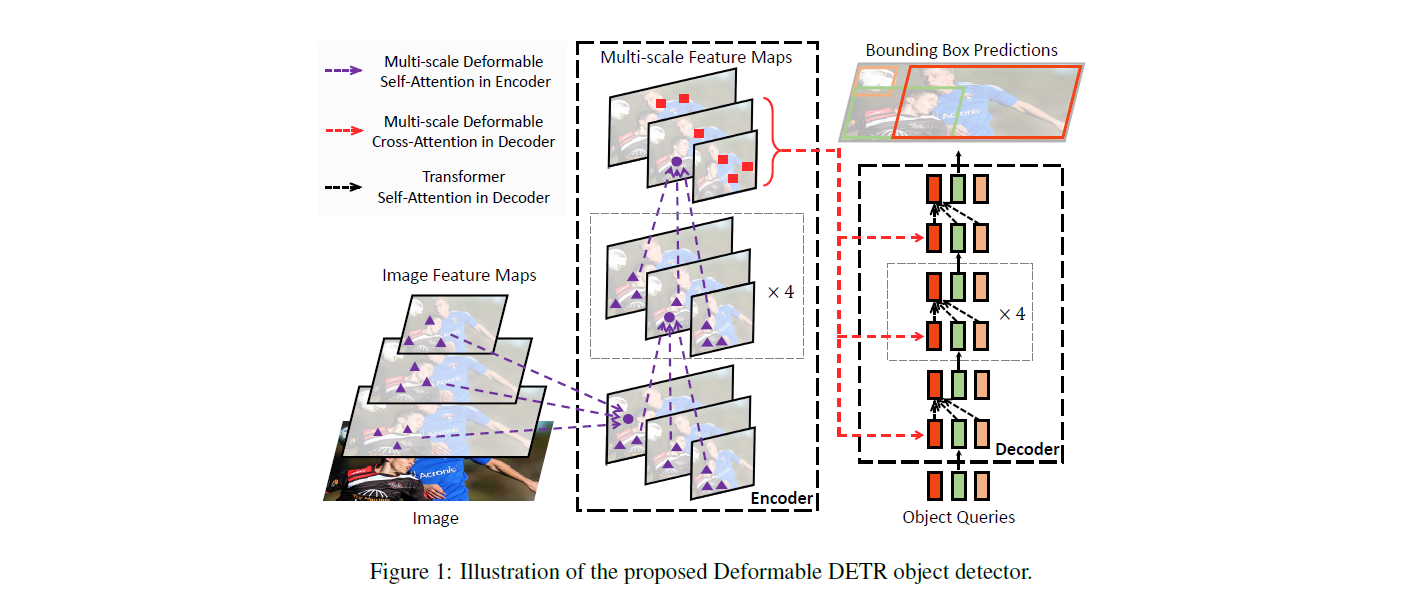🚀 Deformable DETR model trained using the Detic method on LVIS
This is a Deformable DEtection TRansformer (DETR) model trained on LVIS (with 1203 classes). It can be used for object detection tasks in the field of computer vision.
🚀 Quick Start
This Deformable DETR model, trained using the Detic method on LVIS, is a powerful tool for object detection. You can use it to detect objects in images.
✨ Features
- Encoder - Decoder Transformer: The DETR model is an encoder - decoder transformer with a convolutional backbone.
- Object Queries: It uses object queries to detect objects in an image. Each object query looks for a particular object.
- Bipartite Matching Loss: Trained using a "bipartite matching loss" and the Hungarian matching algorithm for optimal mapping.
📦 Installation
No specific installation steps are provided in the original document.
💻 Usage Examples
Basic Usage
from transformers import AutoImageProcessor, DeformableDetrForObjectDetection
import torch
from PIL import Image
import requests
url = "http://images.cocodataset.org/val2017/000000039769.jpg"
image = Image.open(requests.get(url, stream=True).raw)
processor = AutoImageProcessor.from_pretrained("facebook/deformable-detr-detic")
model = DeformableDetrForObjectDetection.from_pretrained("facebook/deformable-detr-detic")
inputs = processor(images=image, return_tensors="pt")
outputs = model(**inputs)
target_sizes = torch.tensor([image.size[::-1]])
results = processor.post_process_object_detection(outputs, target_sizes=target_sizes, threshold=0.7)[0]
for score, label, box in zip(results["scores"], results["labels"], results["boxes"]):
box = [round(i, 2) for i in box.tolist()]
print(
f"Detected {model.config.id2label[label.item()]} with confidence "
f"{round(score.item(), 3)} at location {box}"
)
📚 Documentation
Model description
The DETR model is an encoder - decoder transformer with a convolutional backbone. Two heads are added on top of the decoder outputs in order to perform object detection: a linear layer for the class labels and a MLP (multi - layer perceptron) for the bounding boxes. The model uses so - called object queries to detect objects in an image. Each object query looks for a particular object in the image. For COCO, the number of object queries is set to 100.
The model is trained using a "bipartite matching loss": one compares the predicted classes + bounding boxes of each of the N = 100 object queries to the ground truth annotations, padded up to the same length N (so if an image only contains 4 objects, 96 annotations will just have a "no object" as class and "no bounding box" as bounding box). The Hungarian matching algorithm is used to create an optimal one - to - one mapping between each of the N queries and each of the N annotations. Next, standard cross - entropy (for the classes) and a linear combination of the L1 and generalized IoU loss (for the bounding boxes) are used to optimize the parameters of the model.

Intended uses & limitations
You can use the raw model for object detection. See the model hub to look for all available Deformable DETR models.
Evaluation results
This model achieves 32.5 box mAP and 26.2 mAP (rare classes) on LVIS.
🔧 Technical Details
The DETR model's encoder - decoder architecture with a convolutional backbone provides a strong foundation for object detection. The use of object queries and the bipartite matching loss during training contribute to its effectiveness. The Hungarian matching algorithm ensures an optimal mapping between queries and annotations, and the combination of cross - entropy and L1 + generalized IoU loss optimizes the model's parameters.
📄 License
This model is licensed under the Apache 2.0 license.
BibTeX entry and citation info
@misc{https://doi.org/10.48550/arxiv.2010.04159,
doi = {10.48550/ARXIV.2010.04159},
url = {https://arxiv.org/abs/2010.04159},
author = {Zhu, Xizhou and Su, Weijie and Lu, Lewei and Li, Bin and Wang, Xiaogang and Dai, Jifeng},
keywords = {Computer Vision and Pattern Recognition (cs.CV), FOS: Computer and information sciences, FOS: Computer and information sciences},
title = {Deformable DETR: Deformable Transformers for End-to-End Object Detection},
publisher = {arXiv},
year = {2020},
copyright = {arXiv.org perpetual, non-exclusive license}
}
Information Table
| Property |
Details |
| Model Type |
Deformable DETR model trained using the Detic method on LVIS |
| Training Data |
LVIS (including 1203 classes), COCO |
| Tags |
object - detection, vision, detic |
Disclaimer
The team releasing Detic did not write a model card for this model so this model card has been written by the Hugging Face team.

